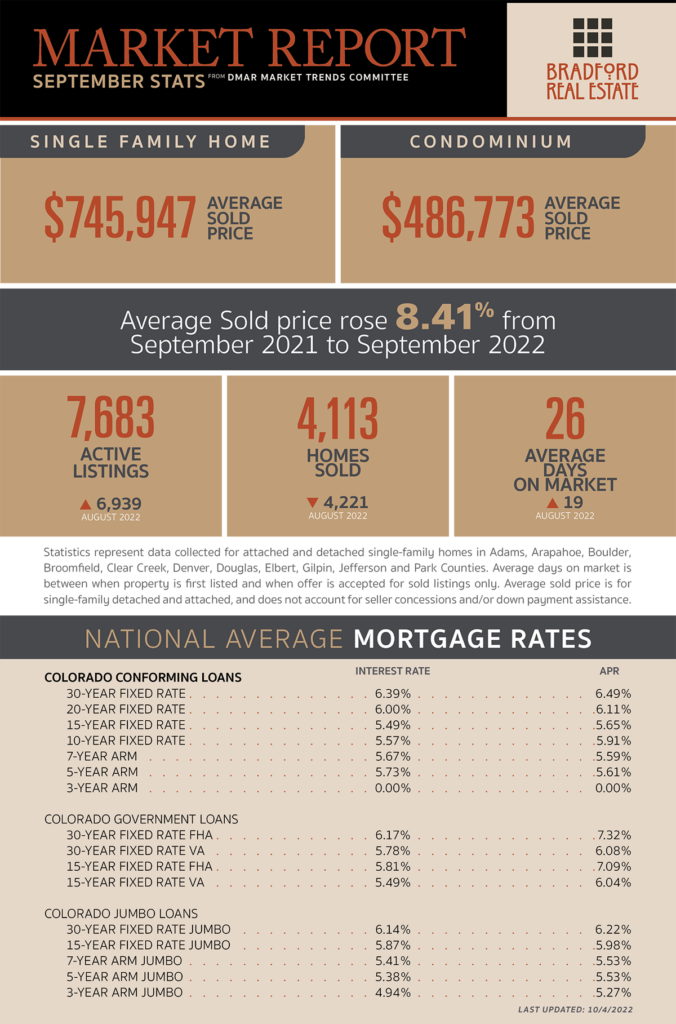home
about
properties
contact
blog
Market Insights
October 21, 2022
As published in DMAR Market Trends, October 2022
Denver was voted the seventh “Greenest City in the U.S.” due to our Bring Your Own Bag tax and other systems that will make recycling and composting free in 2023 with a required fee for trash service bins, along with rebates for eBikes and electric vehicles.
Colorado ranked fourth nationwide as the state with the most number of homes at risk to wildfires—behind California, Florida and Texas—with El Paso County leading the way. Jefferson County ranked third with Douglas County coming in fifth.
Denver is second only to Boise, ID in price reductions among 97 cities with 58% of homes experiencing a price drop.
Investors poured money into existing properties in Denver. Southwest Denver neighborhoods Barnum, Westwood, Mar Lee and Harvey Park, were some of the hottest neighborhoods for property flips in 2021 and the first part of 2022.
Lumber prices are back down to pre-COVID levels.
The National Association of Realtors® 2022 Remodel Impact report found that refinishing hardwood floors, installing new wood flooring, replacing roofing and installing new garage doors topped the list of projects with 100% or greater cost recovery.
The soaring cost of housing has been a key driver of inflation. For most people, housing is their biggest expense. About one-third of the Consumer Price Index, a basket of goods and services the Bureau of Labor Statistics uses to track inflation, is the “shelter” component.
Rents dropped nationwide for the first time in two years.
MORTGAGE NEWS
From July to September, mortgage rates fluctuated by roughly half a percentage point every four weeks, which is the most volatile three-month period since 1987.
The Federal Reserve raised their fed rate another 0.75% from 3% to 3.75%. Its target, per the Fed Dot Plot, is for the fed rate to reach 4.6% in 2023. This will most directly impact consumer debt, HELOCs and business reinvestments.

Be the first to comment